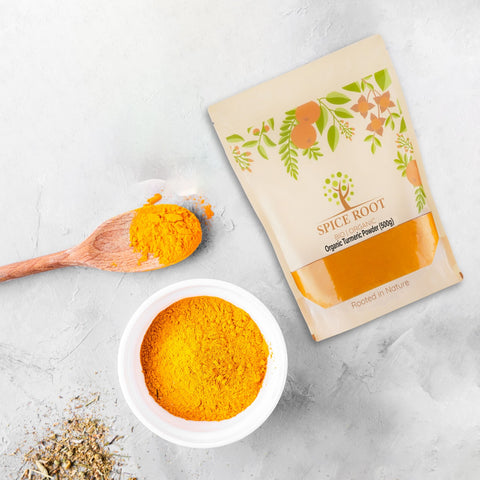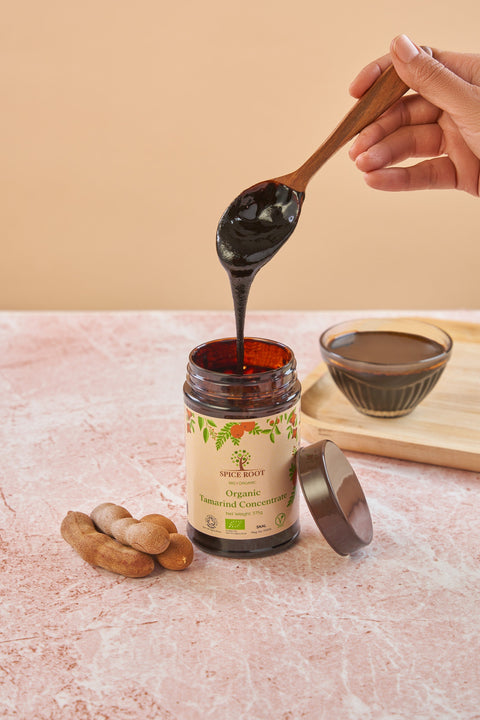Turmeric referred to as the "golden spice," has been an everyday ingredient and medicinal staple for centuries. Its deep, vibrant color and robust flavor make it a feature of various dishes, particularly in South Asian cuisine. But with the evolution of Turmeric as a health food, another debate has cropped up: organic versus regular turmeric. What is the difference, and does it really matter? Let's dive in.
What is Turmeric?
Turmeric is a flowering plant from the ginger family; its rhizomes, or underground stems, are used both as a spice and in traditional medicine. The active compound in turmeric is curcumin, known for its anti-inflammatory and antioxidant properties. Turmeric is also classified as an adaptogen. Research points to the great potential turmeric holds in the treatment of inflammatory bowel disease, psoriasis, atherosclerosis and others (1).
Understanding Organic Turmeric
Organic turmeric is grown without artificial pesticides, herbicides, and chemical fertilizers. In their stead, organic farming relies on natural means of attaining good soil health and pest control. That essentially means organic turmeric is produced in a more environmentally friendly manner and often sustainably.
Certified Standards: Any product which makes an organic claim must be certified by the approved control / regulatory body of that country to ensure organic standards are being met. For example, in the UK, Soil Association Certification Ltd, Organic Food Federation, Organic Farmers and Growers are a few of the leading control bodies approved by DEFRA for certification work.
What About Conventional Turmeric?
Conventional turmeric here refers to that which is grown using conventional farming techniques. This usually involves the use of chemical pesticides, herbicides, and synthetic fertilizers for growth and yield enhancement. Sometimes, yellow dyes and colour enhancing pigments are added to conventional spices such as turmeric to make the product more “attractive” to the consumer. These dyes such as Sudan dyes are highly carcinogenic and pose a risk to human health when consumed in large quantities.
- Measurable Yields: These practices have often resulted in higher yields and, perhaps, could be more cost-effective, thereby making the turmeric more affordable.
- Standard Practices: Conventional turmeric is grown using standard methods—that is, the methods of mainstream agriculture, which are rarely the methods of sustainability or environmental stewardship typically sought in organically grown crops.
Comparing Health Benefits
The main differences between organic and regular turmeric in terms of health benefits include reduced exposure to harmful chemicals, and getting a purer form of the product. Here is a closer look:
- Pesticide Residues: Organic turmeric is less likely to contain pesticide residues, of which some consumers may be concerned.
- Curcumin Content: It is the active ingredient of turmeric and the component responsible for the health benefits associated with it. Organic turmeric is widely believed to have higher overall curminoid content compared to conventional turmeric.
- Environmental Impact: For the environment, organic turmeric does not make use of methods that are as damaging to the ecosystem. In an age where we all must choose conscious consumerism; it is important to choose products which nurture the earth.
Adulteration with lead: An important issue
Turmeric unfortunately can be adulterated with lead chromate to give it a bright yellow hue and make it more attractive to buyers. Its addition causes a direct increase in lead levels in the spice, causing increased lead exposure to consumers. Lead is a devastating neurotoxin, particularly harmful to children’s cognitive development. A study by The University of Stanford (2) showed pregnant women in Bangladesh had elevated levels of lead in their blood. This can cause higher exposure of lead in babies and can harm their neural development.
When you buy organic products, they are tested for adulterants such as lead chromate, and Sudan dyes. Only batches which have zero adulterants are certified as organic. Certification bodies require the food business operator to conduct a wide array of tests showing conformity to organic. Often conventional turmeric is untested for various parameters to keep the end costs low for the buyers. Therefore there is an increased need to bring transparency in the turmeric supply chain.The cost of a conventional spice may be low, but the cost to human health is very high.




